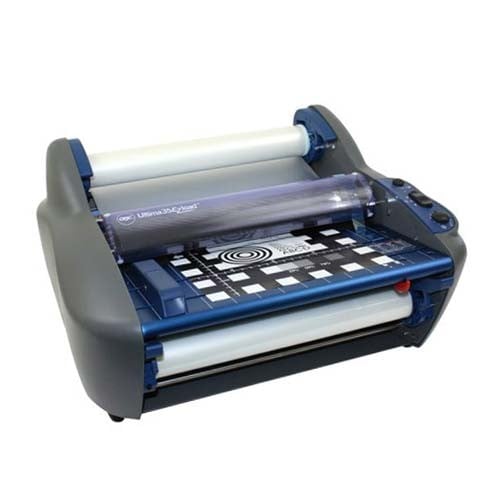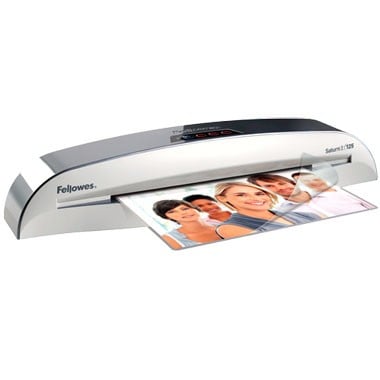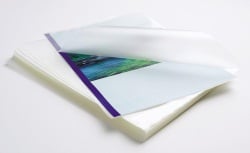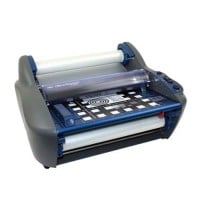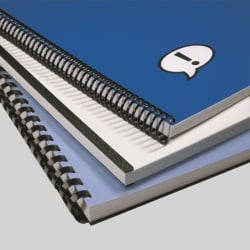MyBinding Knowledge Base
- Binding (248 Article)
- General Binding (42)
- Plastic Comb Binding (57)
- Fastback Binding (59)
- Perfect Binding (2)
- Modular Punching (8)
- Zipbind (3)
- Twin Loop Wire (13)
- Coil Binding (22)
- Thermal Binding (14)
- Strip Binding (1)
- VeloBind (4)
- Binding Covers (14)
- Proclick Binding (10)
- SureBind (4)
- Screw Post (2)
- Hole Punches (2)
- Staplers (4)
- Komtrak Insprial Binding (2)
- Paper (1)
- Rhin-O-Tuff (5)
- Binding Machines Comparison (17)
- Laminating (109 Article)
- General Laminating (26)
- Roll Lamination (16)
- Pouch Lamination (36)
- Pouch Board Laminator (3)
- School Laminator (3)
- Foil Laminating (3)
- Royal Sovereign Laminators (10)
- Laminators Comparison (3)
- Boards (11 Article)
- Bulletin Boards (3)
- Whiteboards (5)
- Chalkboards (1)
- Paper Shredders (44 Article)
- General Shredding (35)
- Industrial Shredders (1)
- Cross-Cut Shredders (2)
- Cardboard Shredders (1)
- Multimedia Shredders (1)
- Personal Shredders (1)
- High Security Shredders (2)
- Ring Binders (9 Article)
- Specialty Binders (2)
- Reinforced Paper (1)
- Health Care Punched Paper (1)
- Perforated Paper (2)
- View Binders (1)
- Index Tabs (9 Article)
- Index Tab Dividers (2)
- Copier Tabs (4)
- Pocket Folders (1)
- Custom Index Tabs (1)
- Pre-Printed Index Tabs (1)
- Paper Handling (37 Article)
- Paper Folders (9)
- Paper Joggers (2)
- Guillotine Cutters (4)
- Rotary Trimmer (3)
- Electronic Paper Cutters (1)
- Corner Rounders (2)
- Paper Scoring (2)
- Paper Drill (2)
- Booklet Makers (3)
- Stack Cutters (1)
- Paper Handling Equipment Comparison (5)
- ID Accessories (12 Article)
- Badge Holder (1)
- Lanyards (8)
- Badge Reels (1)
receive
$5off
*On order $25 or more.
What do the different terms of Pouch Lamination mean?
If you’ve never used a pouch laminator before, you might be feeling kind of bewildered by all of the terminology associated with this document finishing method. Well, breathe easy because this brief glossary will fill you in on everything you need to know about carriers, mils, and the difference between hot and cold lamination. Continue reading so you can become well-versed in laminator terminology.
Carrier. A carrier prevents excess laminate from getting all over your machine. It’s essentially a folded piece of paper you stick your document in before laminating it. A carrier has a slick interior so it won’t get totally gummed up from excess laminate.
Cold lamination. Lamination done without heat. It’s ideal for preserving heat-sensitive documents and photographs. Not all machines are capable of cold lamination, so if you need this feature, make sure to look for it.
Fellowes. An office machine manufacturer that makes great laminators, including the Voyager VY-125. The company makes products that are fantastic for both occasional and everyday use.
HeatSeal. The brand name associated with GBC laminators. HeatSeal products are some of the best machines you can buy for both home and office use.
Hot lamination. Lamination that’s done with heat. The heat activates the glue in a standard laminating sheath so your document can be encased in plastic and thus preserved.
Matte pouches. These supplies have a matte exterior as opposed to a glossy one. Due to the surface’s somewhat granular texture, it can be written on with a variety of writing instruments.
Mil. A mil refers to a thousandth of an inch, as well as how thick a pouch is. Common sizes are 3, 5, 7, and 10 mil. The higher the number, the better protected your document will be because it will be more rigid.
Mounting board. A board that can be run through your machine so as to join a document to a sturdy backing. These are typically used for art showings, point-of-purchase displays, and so on.
Pouch. The plastic sheath you place your document in for lamination. These supplies are available in a variety of sizes so you can laminate small items such as business cards and larger ones including menus and posters.
Pouch laminator. A machine that laminates items sheathed in plastic. Using one of these devices often entails using a carrier.
Reverse mode. A mode found on most high-quality laminators. It comes in handy if your document ends up getting jammed in the machine.
Self-sealing pouches. Supplies that don’t need to be heated up in order to laminate your item. Typically used during cold lamination. They can also be used manually.
Sticky back pouches. These items have a sticky back so you can adhere your document to a surface.
Throat. The feed opening on a laminator. Throats typically range from about 4 to 13 inches wide.
UV/UL pouches. These supplies will protect your document from the elements, including the sun’s rays. They’re good to use if you’re creating signs, banners, etc. that will be placed outdoors.
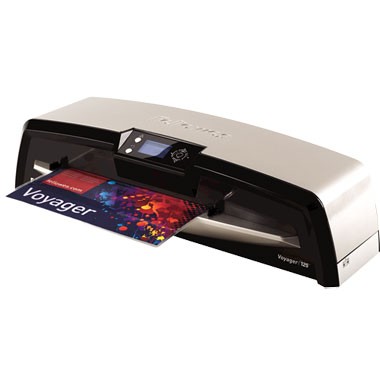
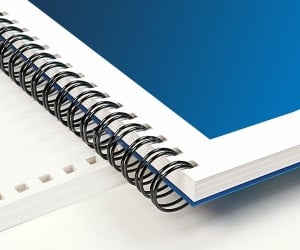
< Over the years, a number of customers have asked me whether they can use twin loop wire with their plastic comb binding machine. These customers often don’t want to have to buy a brand new machine but like the look and feel of twin loop wire binding. However, the answer to their question isn’t as simple as it seems. You see, they actually do make twin loop wire that is designed to work with the plastic comb binding hole pattern. With that said, if you want to use these wires you are going to need a way to close the wires. What is Spiral-O Wire? Let me explain a little bit more…There is a product that we carry called Spiral-O Wire. This wire has 19 loops and is designed to work with the hole pattern from a plastic comb binding machine. Spiral-O Wire is sometimes called Wire Combs or Ibico Wire and was originally designed for use with some of the older Ibico binding machines. A number of the older Ibico plastic comb binding machines also included a twin loop wire closer on the front of them to allow users to use both plastic combs and wire. This 19 loop wire was designed for this purpose. What Equipment is Needed? As the Ibico brand has been phased out by GBC and all of the older Ibico plastic binding machines have been replaced with new models, they no longer have the twin loop wire closer on the front of them. This presents a problem in trying to use these spiral-o wires since you can’t use the wires without a way to close them. One of the only options left is to purchase a Twin Loop wire closer. However, since twin loop wire closers are not incredibly cheap this option usually only appeals to users who have larger electric plastic comb binding machines. Otherwise, it is often advisable to simply buy a low end 3:1 pitch twin loop wire binding machine (the supplies are cheaper). This being said, if you have one of the older Ibico binding machines that has a wire closer included you are in luck. The Spiral-O binding supplies that we carry will work perfectly with your machine and you will be able to use both plastic combs and wire depending on your needs. These Spiral-O binding supplies are available in Black, Silver, White, Blue and Red and in sizes up to 1″ in diameter. If you aren’t sure what type of wire binding supplies that you need to work with your machine simply give us a call. Our trained sales representatives will be glad to help you find the correct supplies for use with your machine.(Read More)
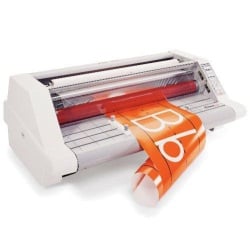

Loading...


